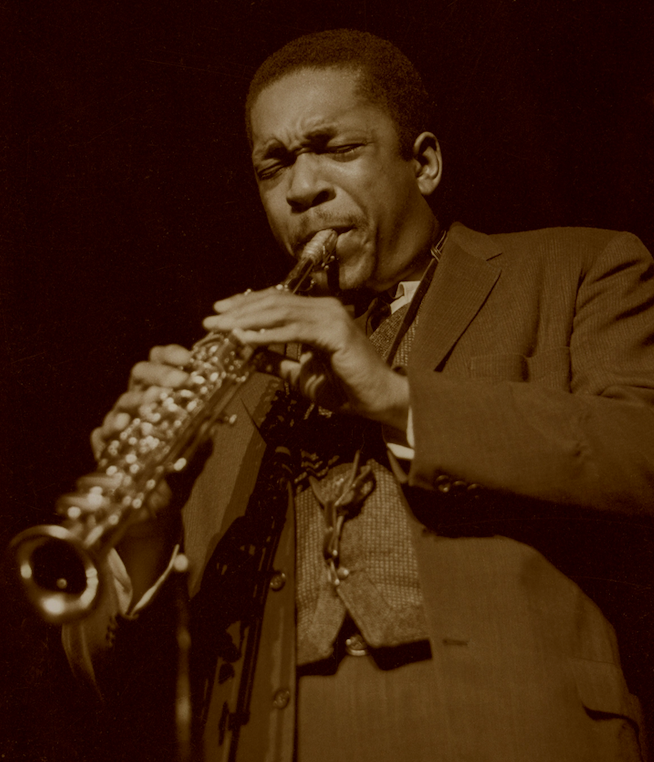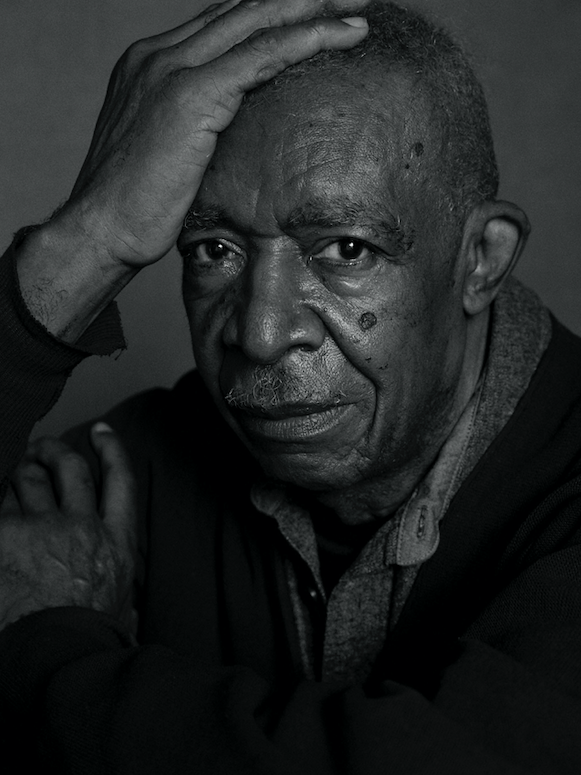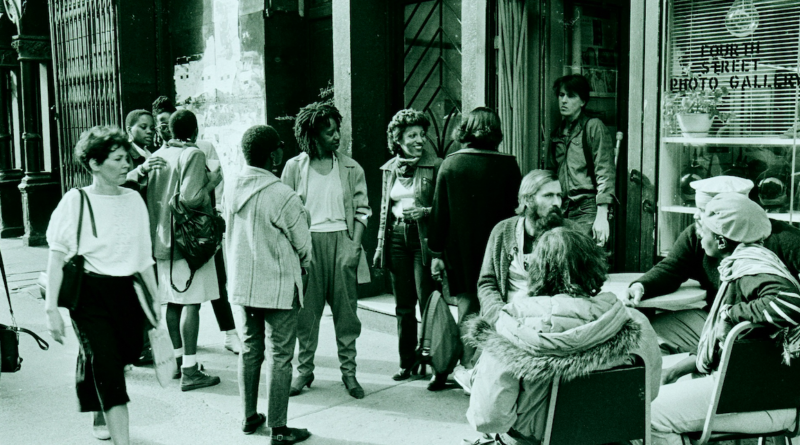INTERVIEW: Alex Harsley on his unique connection to The Apollo
Photo: A gathering of regulars for an opening at The 4th Street Photo Gallery, 1990s. Photo by Alex Harsley / Photo courtesy of the artist.
Alex Harsley, a most-important photographer who is still going strong today, has been creating art for almost 60 years. Born in 1938 in South Carolina, Harsley found his muse in New York City, including in Harlem, right along the main thoroughfare of 125th Street. That’s where some of his most iconic images were captured, and now the famed photographer is exhibiting these pictures, plus photographs from other Black creative spaces around New York City, in a new show called From The Victoria to The Village: A Visual History of Black Creative Spaces. The exhibition, running through April 30 at The Apollo Stages at The Victoria, which coincides with the legendary theater’s 90th anniversary and grand opening of The Apollo Stages at the Victoria Theater.
Harsley, according to his official biography, is an accomplished documentary photographer, someone who has given the world so much with his art and someone who has also given back to others. He started his documenting in 1958 and hasn’t stopped since. By virtue of his curation of The 4th Street Photo Gallery, Harsley has collaborated with many other artists over the years. He is also the founder of Minority Photographers Inc., and his résumé lists many important bullet points, including numerous solo shows at prestigious galleries.
This new exhibition is a special one for the photographer.
“They’ll be looking at a rather interesting missing past that has occurred in Harlem,” Harsley said in a recent phone interview. “I moved to Harlem back in 1954-55, and it was undergoing some rather interesting changes at that time. So in the process of all that, I kind of got into photography and decided to start documenting it in 1958, and that was somewhat of an interesting time period in Harlem.”
At that point in his life, Harsley was only used to his formative years in southern South Carolina, in a town called Rock Hill. He came to New York City at the age of 11 and has never really left. He was amazed by the change in environment, with so many people living on top of one another.
“I had never seen that,” he said of the tall buildings in Manhattan. “I’m coming out of the Deep South. … It’s an interesting history that’s up on the wall now in terms of all the interactions I had along the way, starting in 1958, and included in that selection is an interesting area that I got involved with in terms of Harlem, mainly 125th Street. 125th Street was the street to go to for my clothes, anything that was interesting and that you needed in terms of value. That was 125th Street, so I found 125th Street to be my place to go to hear Ray Charles, Miles Davis way back in the ‘50s. So that’s how I came into all of this here, and that’s essentially what’s up on the wall.”
Throughout his career, Harsley has documented change, including changes in Harlem. He doesn’t see his images solely as a celebration, and he doesn’t see the images tinged with sadness for locations and people long gone. “I realized everything is forever changing,” he said. “It’s where you come in at and where you leave at, and where I came in at was the beginning of something. It’s like starting all over again.”
He remembers one important date in his photographic career. He was six years into his craft, and he was given the ultimate of assignments. John Coltrane was playing The Apollo, and he needed to photograph the jazz musician. The assignment gave Harsley one of his best-known images, but the memory of that night in Harlem also came with some regret.
“So now I’m being a big-time photographer,” Harsley said with a laugh. “I got into the back [of the theater], and I missed the marquee. To this very day, to this very day I regret that. … I wanted to have John Coltrane on the marquee. It bothers me to this day, and that should be the main picture on the wall downstairs [in this exhibition].”
Still, marquee aside, Harsley was able to capture Coltrane in all his musical momentousness. That was a crowning achievement (one of many) for a young man who somehow fell into his professional calling. During his summer days while growing up, he took a job as a clerk at a photography store called Willoughby’s. He worked in the dark room without knowing that the lessons he was learning he would use for the rest of his life. After he received another job offer at a film company, he started to realize that photography might be the right fit.
“Then eventually somebody said, ‘I’ll sell you a camera.’ I said, ‘I need a camera?’ So, without thinking, I went along and bought a camera, and that was my entrance into photography,” Harsley said. “Yes, my first camera I wasn’t able to really use because I wanted to see how it worked, so I took it apart. And then after that, I realized I can’t put it back again. … I started going to camera stores and looking and understanding and reading books, etc. Prior to that, I was into looking at magazines, looking at what other people were doing, so once I got close to this thing called photography, I was like, I can do the same thing. But I’m going to do it better. So that’s what’s on the wall downstairs. I did it better.”
“Doing it better” led him to be curator of The 4th Street Photo Gallery and a common presence among artists on the Lower East Side. He thoroughly enjoys memories of his time at the gallery because this opportunity afforded him the chance to give back to other artists.
“That was a dream to be able to have that opportunity,” he said. “In order to have that opportunity, I have to thank everybody else behind me who forced me into all of this. Once I was into it … I took it very seriously in terms of running this kind of organization. I refused to put myself out in front to get myself all the PR. So people came to me. … Next thing you know, I was collaborating with all these great people without really understanding, well, that’s such and such a person. OK, we’re friends. We’re going to hang together. We’re going to learn something from each other, and in the process of that, we’re going to benefit each other’s rise into becoming somebody. I was always interested in helping somebody become somebody.”
By John Soltes / Publisher / John@HollywoodSoapbox.com
Alex Harsley’s new exhibition, From The Victoria to The Village: A Visual History of Black Creative Spaces, is currently running at The Apollo. Click here for more information.



